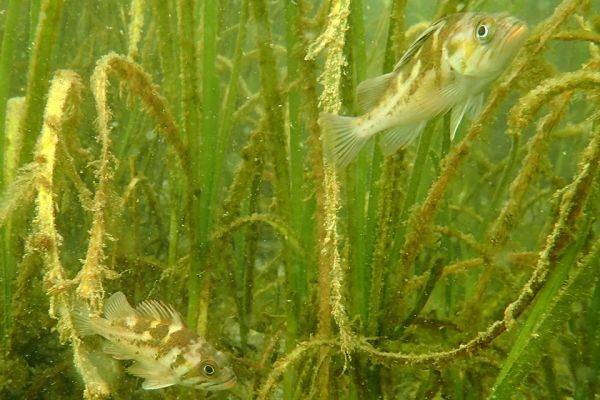In a study that spans Canada’s Pacific Coast, University of Victoria researchers have confirmed that human disturbance of seagrass meadows results in lower fish diversity.
While human activity is known to impact a variety of ecosystems, the effect of human activity on coastal biodiversity is largely unknown. Coastal seagrass meadows are important nursery grounds for commercial and ecologically significant fish species. Globally, these ecosystems have declined at an average rate of seven per cent a year since 1990, making their preservation all the more urgent.
Led by UVic post-doctoral fellow Josie Iacarella and biology professor Julia Baum, the collaborative effort involving government, non-government organizations and academics examined 89 seagrass meadows across Canada’s Pacific Coast, including meadows in Saanich Inlet, Victoria Harbour and Sooke Harbour.
Disturbance was measured by the proportion of overwater structures such as ferry terminals and marinas, amount of shoreline modification, and the number of people living in a particular watershed. The study found that in areas with high levels of human disturbance, the same few fish species thrived. While hardy species such as the threespine stickleback dominated in high-disturbance areas, sensitive rockfish species and slow-swimming egg-guarders, such as pipefish and gunnel fish, were more likely to be found in areas with less human disturbance.
Continue reading at University of Victoria.
Image via University of Victoria.


